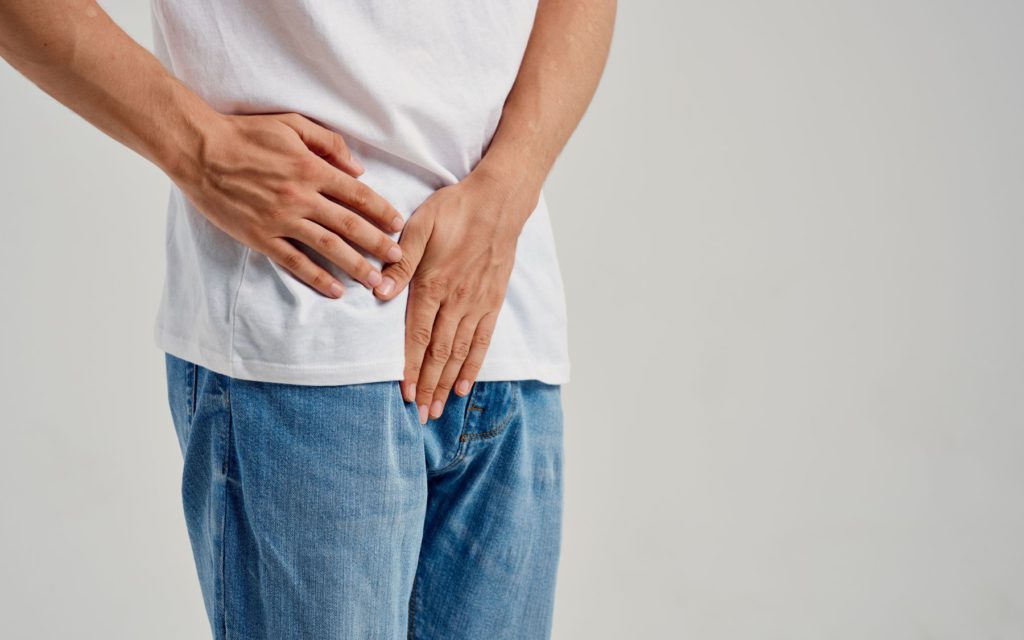What is the aim of the HoLEP procedure?
HoLEP (Holmium laser prostate surgery) is an alternative to conventional transurethral resection of the prostate (TURP) for the treatment of bladder outflow obstruction. It is a modern highly-effective prostate operation to treat men with obstructing bladder symptoms or retention of urine. These blockages of urine flow are removed without any incisions being made.
Who is an ideal candidate for HoLEP treatment?
Men who are reasonably fit with urinary symptoms or retention, who have an enlarged prostate and who are not helped by medical treatment (drugs), are candidates for HoLEP.
It is used for prostates of all sizes, but while there are several choices for men with smaller glands, it is the undisputed best option for larger prostates (measuring more than 80 grams).
The reason for this is that there is the greatest amount of tissue removed without risks of serious complications that can occur with the more traditional operations. It is mostly used for benign enlargement rather than cancerous glands.
How is it performed?
Similar to TURP (transurethral resection of the prostate) HoLEP is performed either under a general anaesthetic or spinal anaesthetic. An instrument is inserted down the penis and a laser is used to shell out the middle section of the prostate. The operation takes around two hours, depending on the size of the prostate gland.
Using the very safe holmium laser, a large amount of obstructing prostate gland tissue is “shelled-out” and evacuated from the bladder via the urethra (in the penis).
This leaves a cavity within the prostate, which allows rapid flow of urine through the prostate when the catheter is removed, usually the following day.
It is important to have a urine flow rate test and a measurement of the prostate size, in order to help decide the best type of prostate operation.
It is not a very major operation.
Is HoLEP surgery risky?
The main advantage of HoLEP over conventional TURP is that it is less risky. The risk of bleeding is reduced, which generally makes for a safer procedure and can translate into a shorter hospital stay.
In the long term, the only real complication is a 3% chance of a stricture, which is where a scar tissue forms in the urethra, which in turn results in a restricted flow at a later stage, usually within the first year.
What are the advantages of this type of procedure?
The main advantage is that it is a safer procedure because of the reduced risk of bleeding.
Secondly, doctors usually remove more of the central part of the prostate compared to other operations which are designed to do the same. This signifies that HoLEP tends to be more durable in the long term and the risk of requiring a redo at a later stage is much less. It is recommended in Getting it Right First Time (GIRFT) guidelines.
Some men become concerned about incontinence due to the procedure. Although in the early stages some people find that the sphincter muscles do get bruised, in the long term, HoLEP is not an operation which has any effects on continence and doesn’t make people leak.
Additionally, some men also get concerns about erections but again the risk of erections is less with HoLEP than there is with conventional TURP. This is because there is no heat generated during the procedure with the laser.
What is the recovery period like following HoLEP treatment?
Most men need to take it easy for the first week or two because in the early stages there is often some stinging and burning and passing urine relatively frequently.
However, it is unusual for men to need anything in terms of pain relief and those symptoms will settle on their own.
Most men have some burning and stinging for a few days after surgery. This usually settles within the first few weeks but it can take up to three months to get the full benefit from the operation.
How effective is the procedure?
The prostate is like a doughnut with a hole in the middle: it wraps around the urethra (water pipe) at the exit of the bladder. As the prostate grows with ageing, this hole in the middle gets tighter and obstructs the bladder when it tries to empty, causing a variety of symptoms and occasionally complete blockage (acute retention), bladder stones or kidney failure due to back-pressure.
There are several types of prostate operation to treat obstruction, some involve removing tissue and others involve shrinking the tissue or using implants to hold the prostate open. All kinds of operations may be successful in the short term (one to four years) but as the prostate remnant continues to grow, an obstruction can develop again.
HoLEP is the most effective procedure of all in terms of giving a durable long-term (more than 10 years) outcome because so much tissue gets removed compared to the other options.
However, a few unlucky men (up to 20%) continue to have symptoms no matter what treatment they have. This is because their bladder doesn’t recover from the effects of the obstruction or they develop a scar tissue “stricture” inside the urethra.
What are the side effects of HoLEP?
Compared with traditional options for big prostate glands, including the open enucleation (Millin) procedure, HoLEP is much safer and less complicated. Instead of spending five nights in the hospital with a catheter and a high chance of needing a blood transfusion, a stay in hospital is often not required or just one night.
HoLEP rarely causes significant bleeding, although anticoagulants must be stopped beforehand. Nor does it disturb the electrolyte composition of the bloodstream. Urinary infection can occasionally occur afterwards necessitating a course of antibiotics.
Temporary incontinence necessitating pads occurs in 3/100, which rarely persists. Persisting symptoms and stricture are mentioned above. I always warn my patients that they may experience intermittent shows of blood, an urgency to get to the toilet and leaks for a few weeks after HoLEP.
This is because the cavity is healing and the bladder is getting accustomed to no longer being obstructed. Retrograde (dry) ejaculation is common and erectile dysfunction is very occasionally reported.
What happens to the prostate after HoLEP surgery?
We use a special device to chop up the shelled out prostate in the bladder, and suck it out through the penis, and then we send it to the laboratory. In the laboratory, they work out whether there was anything untoward in the prostate cancer.
A big wall cavity is then left on the inside, which takes about six weeks to three months to heal. Once healed, the patient will have a good flow and won’t suffer from any urine urgency.
For more information please contact Urology Clinics Manchester and book a consultation with Mr Matthew Liew.





0 Comments